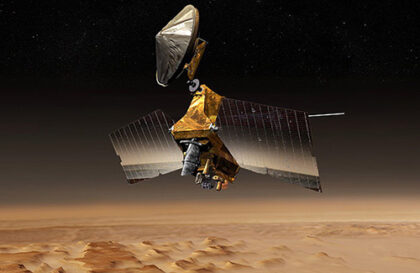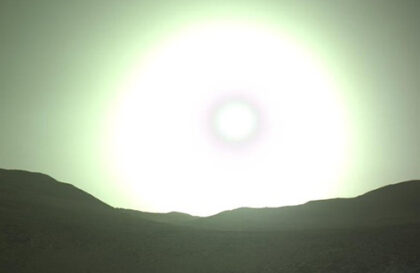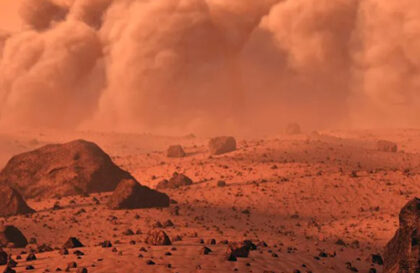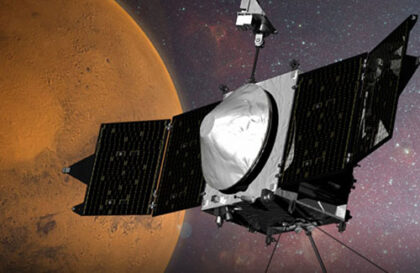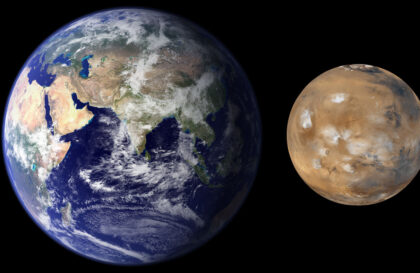Мars is one of the most accessible planets in the sky because it is close to Earth. Astronomers observe Mars, studying its atmosphere, surface, and climatic changes.
After Galileo’s discovery of four moons of Jupiter in 1610, astronomers hypothesized that the number of moons doubled when moving to a more distant planet in the solar system. Considering that only one satellite was known on Earth, namely the Moon, it was believed that Mars should have two satellites. At first glance, this hypothesis was baseless from a scientific point of view, but in a strange way, it came true.
The first person to predict the existence of the moons of Mars was the eminent German astronomer Johann Kepler in 1610. During his research on Galileo’s anagram about Saturn’s rings (“The highest planet I observe threefold”), Kepler decided that Galileo had discovered the moons of Mars.
In 1643, the Capuchin monk Anton Maria Schirl claimed to have seen “Martian moons.”
In 1727, Jonathan Swift, in his work “Gulliver’s Travels,” described two small satellites of Mars, known to Laputa Island astronomers. He noted that these satellites orbited Mars in 10 and 21.5 hours, respectively. He told similar satellites 150 years before their discovery.
On July 10, 1744, German captain Kindermann reported that he had calculated the orbital period of the Martian satellite, which was equal to 59 hours 50 minutes, and 6 seconds. But the final discovery of the moons of Mars became possible only in 1877 thanks to the American astronomer Asaph Hall, who worked at the US Naval Observatory with the world’s largest 26-inch Clark refractor. He finally discovered Phobos and Deimos, two small moons of Mars that had orbital periods close to those predicted by Swift and other astronomers. Phobos and Deimos were named after ancient Greek mythological gods, moons of Mars, and gods of fear and terror, respectively.
Size and appearance
Credit: NASA
Phobos and Deimos are much smaller than Earth’s moon. Phobos is about 22.2 kilometers (about 13.8 miles) in diameter, making it the larger of the two, while Deimos is smaller, with a diameter of about 12.4 kilometers (7.7 miles). They both have irregular, potato-like shapes.
Orbital features
Phobos and Deimos have unique orbital characteristics. Phobos orbits Mars at an extremely close distance, taking only about 7 hours and 39 minutes to complete one revolution. This is faster than the rotation of Mars, so Phobos rises in the west and sets in the east. On the other hand, Deimos has a more distant and slower orbit, taking about 30.3 hours to complete one revolution.
Features of the surface
Phobos and Deimos have highly weathered surfaces typical of objects in the solar system without significant geological activity. Phobos also has a large crater called Stickney, likely formed by an impact early in its history. The surface of Deimos is covered with a layer of friable regolith.
The dusty surface of Deimos
These color-enhanced views of Deimos, the smaller of the two moons of Mars, were taken by the High Resolution Imaging Science Experiment (HiRISE) camera on NASA’s Mars Reconnaissance Orbiter. These two images were acquired 5 hours and 35 minutes apart. Credits NASA/JPL-Caltech/University of Arizona
Deimos has a smoother surface compared to Phobos. When it collides with another body, debris, and dust can be thrown into space. Due to Deimos’ weak gravitational pull, much of this debris and dust cannot return to its surface. However, Mars’ gravity may keep this material close to Deimos’ orbit. As Deimos orbits Mars, this dust settles back onto its surface, making it smoother and filling in some of its craters.
This process also explains why Mars’ moons have dusty or regolithic surfaces, which can soften their appearance and hide some smaller structures on their surfaces.
The blow that could split Phobos
Viking 1 image of Stickney crater, the largest crater on Phobos. Stickney is about10 km in diameter and was formed by a giant impact. Note the striations to the right of the image leading away from the crater. Credit: NASA
Stickney Crater is one of the most prominent and unique features of Phobos. Its size, combined with the size of Phobos itself, indicates how powerful the impact created this crater. Such deep and majestic fractures and grooves that radiate from Stickney Crater also highlight the scale of this impact.
Phobos is in a shallow orbit around Mars, making it the fastest relative to its planet of any moon in the Solar System. This speed of orbital motion causes it to circle Mars faster than the planet itself rotates, causing the unusual phenomenon of Phobos “rising” in the west and “setting” in the east, contrary to the traditional movement of most celestial bodies. This feature may also be a consequence of the impact.
Although Phobos and Deimos remain the only confirmed moons of Mars, the search for other moons of the red planet continues.
Banner image: NASA
Image credit:
https://solarsystem.nasa.gov
https://mars.nasa.gov
https://mars.nasa.gov
https://mars.nasa.gov
https://mars.nasa.gov

